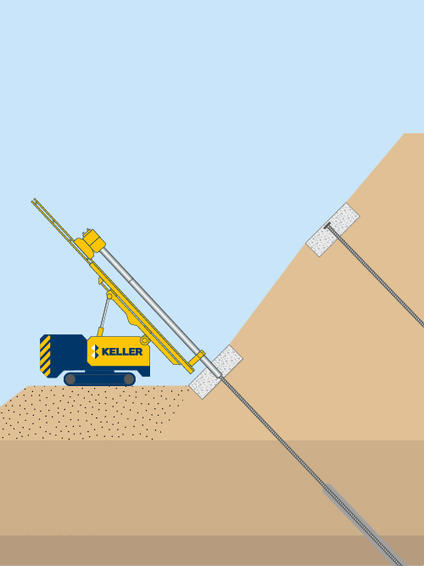Anchor block slope stabilization remediates slopes or existing retaining walls using anchored reaction blocks.

Common uses
Process
Anchored block slope stabilization consists of discrete, anchored concrete blocks placed in a pattern on a slope to increase slope stability.
The block layout pattern is typically in rows across the slope or retaining wall. A stable borehole is executed to the right diameter and designed length, filled with cement grout, and then the anchor (strand or bar with free and bond length) is installed. Reaction blocks are either precast or cast-in-place around the anchor heads. Bearing plates are installed, and the anchors are tensioned against the blocks. The finished anchored reaction blocks resist the movement of the retained soil or wall.
Advantages
Quality assurance
Keller has been installing anchors for many years, continually evolving the technique to achieve better performance. Testing and monitoring can ensure high-quality execution.